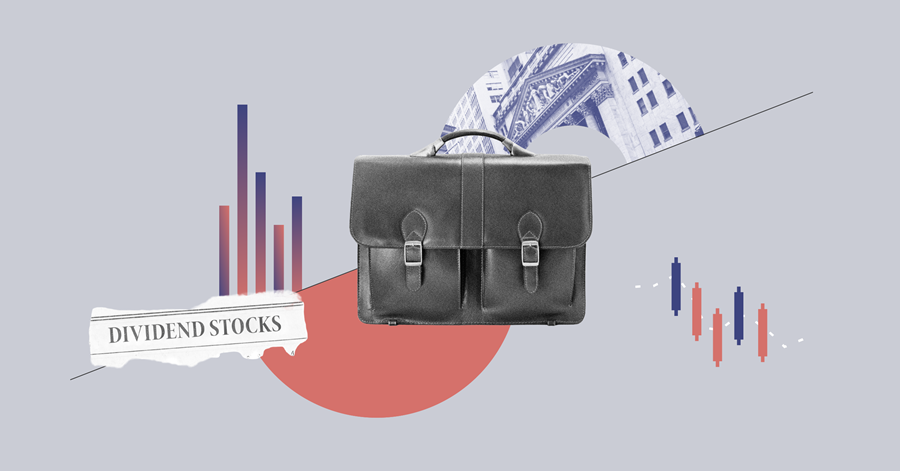Jeremy Glaser: For Morningstar, I'm Jeremy Glaser. I'm here with Josh Peters; he is the editor of Morningstar Dividend Investor newsletter and also our director of equity-income strategy.
He says you shouldn't expect a dividend from Berkshire Hathaway (BRK.A/BRK.B) anytime soon, but that doesn't mean that dividend investors can't learn something from Warren Buffett.
Josh, thanks for joining me today.
Josh Peters: Good to be here, Jeremy.
Glaser: Before we get into what Buffett is buying for Berkshire, let's take a look at Berkshire itself. Famously, they don't pay a dividend; Buffett has been very resistant to paying a dividend, though they are sitting on a ton of cash. Do you think that this is a prudent move for the company?
Peters: Well, first of all, I take Mr. Buffett at his word. I don't think he wants to pay a dividend, and I wouldn't buy the stock at any point in anticipation of the company paying one.
A couple of years ago, he actually devoted a chunk of one of his annual letters to talking about dividend policy and suggesting that shareholders, if they wanted income or something that would function like income, they could just sell off a few shares in order to achieve that end, some cash flow for their portfolio.
Now, the way I view Berkshire Hathaway is very different from how I would view almost any other company with any other operating business. I might like the business; I might like the management. I might trust them as capital allocators, but I still don't want all of the cash flow produced by the business bottled up in that entity because, for example, General Mills (GIS), they generate a lot of free cash flow, but it's important for them to pay that as a dividend.
If they were trying to reinvest all that internally in the business, then they would have the capacity to produce way too many Cheerios – way more than they can actually sell. Or they would go on an acquisition spree into all sorts of other businesses that they probably wouldn't know how to run.
So, I have tremendous respect for General Mills; it's one of my top holdings. I love the company, but I want them to stick to their knitting, and that's the packaged-food business.
Berkshire is a very rare creature where it's been able to thrive as a collection of very disparate businesses because it has the world's best capital allocator at the top. So, there, the formula is different. If you are thinking about Berkshire paying a dividend, then you have to compare that with what Buffett could do if the money was retained internally.
And even now that Berkshire is huge, there is still a better-than-average chance that Buffett can do better with that capital than the average shareholder stands to in, say, an index fund or something like that. That's essentially what I would think of as the hurdle rate.
I wrote about this a couple years ago. I said, "In Buffett We Trust, All Others Pay Cash." I think that's how you want to view that.
But there are other ways to learn from Buffett's approach to capital allocation, as opposed to trying to buy Berkshire for a dividend, and that is to look at the kinds of companies that he actually owns and what those companies do within the Berkshire shell.
Glaser: Let's look at that, then. He has made some big investments in utilities, in consumer staples – areas that are ripe for dividend investors. Why do you think he likes those businesses?
Peters: Well, there is a lot of concern – and there has been for some time – that valuations are high among utilities and in staple stocks. REITs as well – not an area that Buffett is generally known to participate in, but something that a lot of income investors own. And I'm sensitive to that. I'm not actually all that thrilled about paying 20 times earnings for staples companies when a lot of them are having trouble generating much earnings growth.
It seems like kind of a rich price. And that begs the question of whether this is just an interest-rate play. Are low interest rates driving people into stocks that they will just turn around and sell and drive the prices back down when interest rates go up?
That is a risk – especially if you are thinking about a short-term time horizon, if you are thinking just about the next jump in interest rates, whenever that happens to take place. But you also have to think about these businesses on a longer-term basis like Buffett does. In the last of couple years, he made a very large investment with 3G Capital, the Brazilian private equity firm, to buy Heinz.
Now, Berkshire is putting more money into that entity, so it, in turn, is able to merge with Kraft Foods Group (KRFT), which is a stock that I own. And he had MidAmerican, a large utility subsidiary at Berkshire, buy Nevada Power in a cash takeover. These look like rich prices, but what are you buying? You're buying scarce assets.
When you think about the defensive, economically resilient characteristics of these businesses, the strong competitive characteristics of these businesses, their ability to generate a stream of cash flow that grows over time for years on into decades without a whole lot of technological risk, and thinking about the fact that there isn't a whole lot else to invest in, whether interest rates are high or low, then I think there is a certain scarcity premium that you can assign to staples firms, to regulated utilities, and other businesses of that kind because investors are going to want more and more of these as cornerstones of their portfolios.
As baby boomers move into retirement, this is what their equity allocations are really going to have to look like. But there are only so many of these companies – defensive, cash-cow businesses that pay good dividends. There are only so many of those to go around. So, those that are out there, even assuming that interest rates are going to go up over the long term – that’s a baseline assumption, every morning when I start looking at my portfolios, that rates are going to go up – these are still scarce, valuable assets that can't be recreated just to meet investor demand.
And I use this analogy: Go back to 1999; everybody wanted a piece of the internet, right? So, what did Wall Street do? You start inventing companies and bringing them public in order to try to satisfy this demand for shares in Internet companies, even though most of those companies never had revenues, let alone earnings. Now fast-forward to today: If everybody is looking for these very stable, resilient, competitively advantaged dividend-paying companies, there are only going to be so many to go around.
It takes 116 years to build General Mills' record of never omitting or skipping or cutting its dividend for 116 years. You can't just make more of them because the demand is there. That means that they're going to have higher valuations than they have had in the past.
Glaser: So, this is a case for maybe paying up for quality versus looking for cigar butts?
Peters: Yeah, and the way I think you want to balance that is to constantly assess the opportunities set within your portfolio. I don't own 100% utilities or 100% staples; those are two of my largest weightings, but I have to look at some other sectors, too.
Sometimes, it's worth taking a little more of that cyclical risk to own a stock like, say, General Electric (GE) or taking a little bit less of a yield in order to get more growth – Fastenal (FAST), another industrial name that I like very much – and have those play some supporting or complementary roles in my portfolio.
I think of GE as a core holding. But overall, it's the staples and utilities, those really stable businesses, that really generate a lot of my income. That's where I generally want to be. But if I can't find those at reasonable valuations and cyclicals can be had more cheaply, then maybe it's time to add a few more of those. So, you have to always be checking your assumptions. I don't think that there is a big risk of a dividend bubble where, all of a sudden, staples names trade at 50 times earnings with 1% dividend yield.
That's one of the great things about dividends: If people are buying yield, the yield goes down as they buy. As the price goes up, the yield goes down. That should automatically check people from dramatically overpaying for these businesses.
But am I willing to pay a full fair price for quality as opposed to looking in the dumpster for something that's cheaper – maybe even has a higher yield but that yield is going to get cut in the next recession? You bet. I'll take the quality every time.
Glaser: Josh, thanks for your thoughts today.
Peters: Thank you, too, Jeremy.
Glaser: For Morningstar, I'm Jeremy Glaser. Thanks for watching.
































